UF-Plant Science Research and Education Unit [PSREU] Scion-Rootstock Trial
Dr. Bill Castle – Dr. Tom Burks – Dr. Fred Gmitter – Dr. Jude Grosser
November 17, 2020 - updated
March 20, 2020 - posted
CREC Citrus Plant Improvement
UF-PSREU Scion/Rootstock Trial- Description
The UF site of about 3 acres was intended to primarily be a place for the testing of over-the-row harvesting equipment being developed by Dr. Tom Burks. To that end, a three-layer windbreak composed of slash pine, Eucalyptus and red cedar was planted in February 2007 around the entire trial site. Citrus trees were planted in March 2007 in North-South rows all 20 feet apart assigned as follows: 4 rows of Sunburst mandarin at 12 x 20 feet, 3 rows of Ray Ruby including a few Flame grapefruit on Flying Dragon trifoliate orange at 8 x 20; also, 3 rows of Valencia/Swingle citrumelo @ 10 x 20, 4 rows of Hamlin/Cleopatra mandarin @ 12 x 20 and 2 rows of navel orange/Swingle @ 12 x 20 ft.
All but the grapefruit and navel orange trees were removed in 2014 because of large tree size and Huanglongbing. Replacement trees consisting of 5 navel orange selections, Hamlin and two new mandarin types on various size-controlling rootstocks were planted in May 2014 [see next section for details].
The UF site of about 3 acres was intended to primarily be a place for the testing of over-the-row harvesting equipment being developed by Dr. Tom Burks. To that end, a three-layer windbreak composed of slash pine, Eucalyptus and red cedar was planted in February 2007 around the entire trial site. Citrus trees were planted in March 2007 in North-South rows all 20 feet apart assigned as follows: 4 rows of Sunburst mandarin at 12 x 20 feet, 3 rows of Ray Ruby including a few Flame grapefruit on Flying Dragon trifoliate orange at 8 x 20; also, 3 rows of Valencia/Swingle citrumelo @ 10 x 20, 4 rows of Hamlin/Cleopatra mandarin @ 12 x 20 and 2 rows of navel orange/Swingle @ 12 x 20 ft.
All but the grapefruit and navel orange trees were removed in 2014 because of large tree size and Huanglongbing. Replacement trees consisting of 5 navel orange selections, Hamlin and two new mandarin types on various size-controlling rootstocks were planted in May 2014 [see next section for details].
UF-PSREU Scion/Rootstock Trial - Summary
- Location: Citra, Marion County.
- Scions: Navel orange: 56-11, Cara Cara, Fisher, Fukumoto, Lane Late and Wild Turkey; Hamlin, Mandarin: Snack, Sugar Belle, Tango; Grapefruit: Ray Ruby
- Rootstocks: UFRs and Bitters, Furr and C-146; US 802, 897 and 942
- Date planted: Ray Ruby/Flying Dragon [March 2007]; others [May-June 2014]
- Design: Single plots
- Plot size: 4-60 trees
- Spacing: 8 x 20 ft. = 272 trees/acre.
- Microsprinkler irrigation
- Data:
- 2014-15 & 2015-16: Yield [boxes/tree]
- 2016-17: Yield [boxes/tree] & [boxes/acre]
- 2017-18: Yield [boxes/tree]
- 2018-19: Juice quality
- 2019-20: Yield [boxes/tree]
- 2020-21: HLB Ratings
- Cumulative yield [boxes/tree]: 3-year oranges and mandarins & 2-year grapefruit*
* Yields were low in the first bearing years so only the data for seasons 2016-17, 2017-18 & 2019-20 were used to compile cumulative yield for oranges and mandarins and data for seasons 2017-18 & 2019-20 were used for grapefruit.
- Trial status: ACTIVE, but modified. Certain trees were removed in 2020.
Navel orange selection/rootstock/HLB study*
Because HLB affects fruit and juice quality, a separate study was initiated in the 2019-20 season to investigate the impact of the disease on navel orange. A 50-fruit random sample was collected in mid-December in the same manner and sampling sites as in past years from each scion-rootstock combination and delivered to Dr. Ritenour’s lab [Ft. Pierce] where the samples were placed in storage at 500F for about 3 weeks.
After storage, the fruit in each sample were divided into two groups according to their size and appearance: [1] N=normal or [2] G=fruit with HLB symptoms. G fruit typically were smaller in size and displayed a peel coloration pattern beginning at stem end of the fruit and progressing towards the stylar end which is the opposite pattern of normal fruit. The juice was extracted from each group and Brix and acid measured. The results of this preliminary effort are presented in the following slides.
*Investigators: Bill Castle, Pete Spyke, Mark Ritenour
Engineering [E]/Technology section
Over the row mass harvesting at the UF PSREU trial and other related technological research
The following slides illustrate the mass harvester in operation at the PSREU
trial, primarily with the first prototype machine along with information
regarding design features and various improvements planned. A 2 nd
generation machine is under development as funding becomes available.
Other applications are also presented.

Fig. 1E. Future vision
• Autonomous navigation systems can improve labor productivity and enhance the
performance of many common production tasks; such as, spraying, mowing, tillage
and cultivation, scouting, yield estimating and even harvesting.
• Autonomous robots can be a viable solution for harvesting fresh market citrus,
process market, selective pruning, fruit/leaf sample collection.
• Robotic systems can selectively harvest late season Valencia without negative
impacts to next year’s yield.
• Automated disease detection holds promise for the fresh market by eliminating
cankerous or blackspot infected fruit from the packing line.
• Automated in field disease detection could provide a more labor efficient and
cost effective approach to scouting for citrus greening, canker, and other diseases.
• New approaches in grove automation offer the potential for sensor networks to
monitor crop status for a more efficient use of agri chemicals, water and fertilizers.
• New grove management concepts will offer improved yield per acre and quicker
return on investments but will demand advanced technologies.
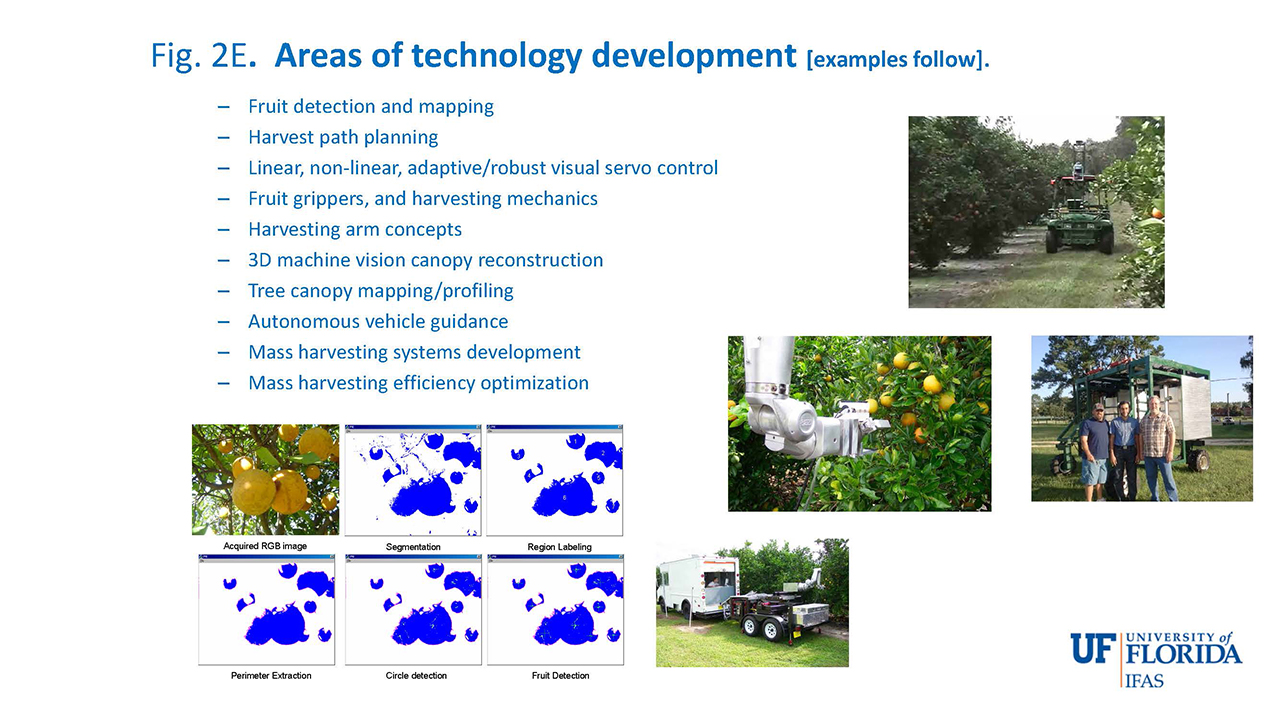
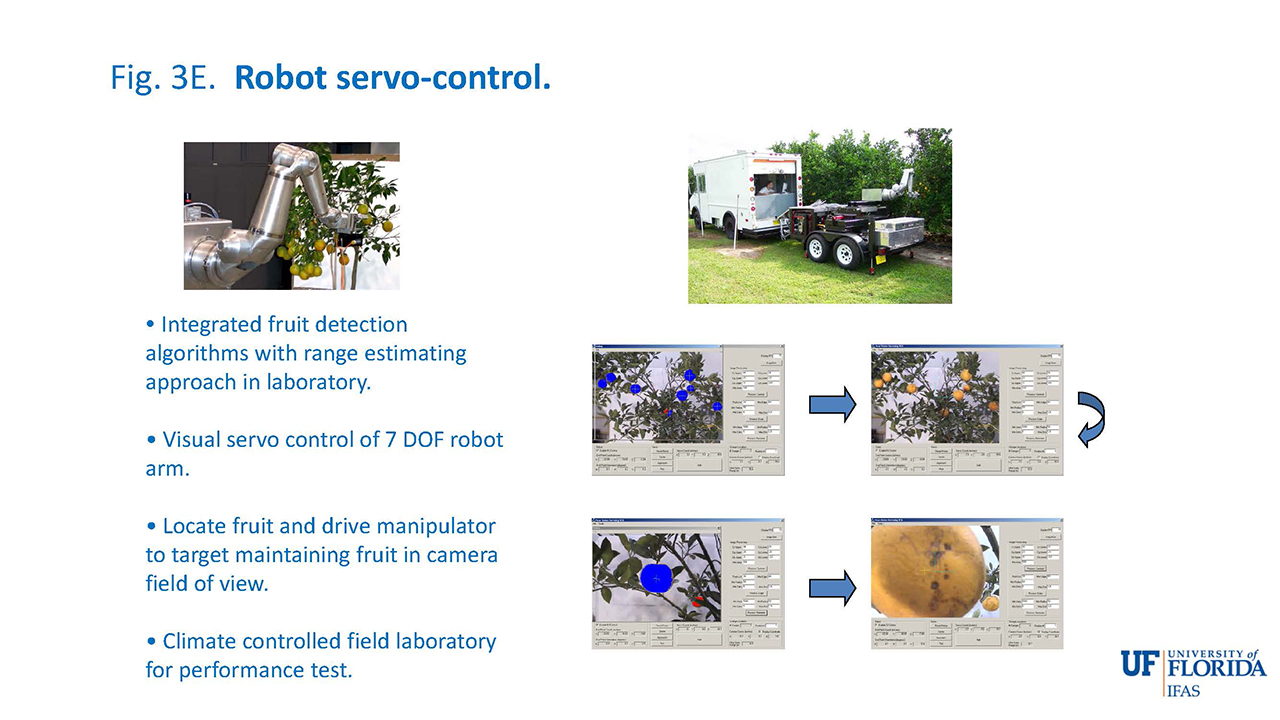
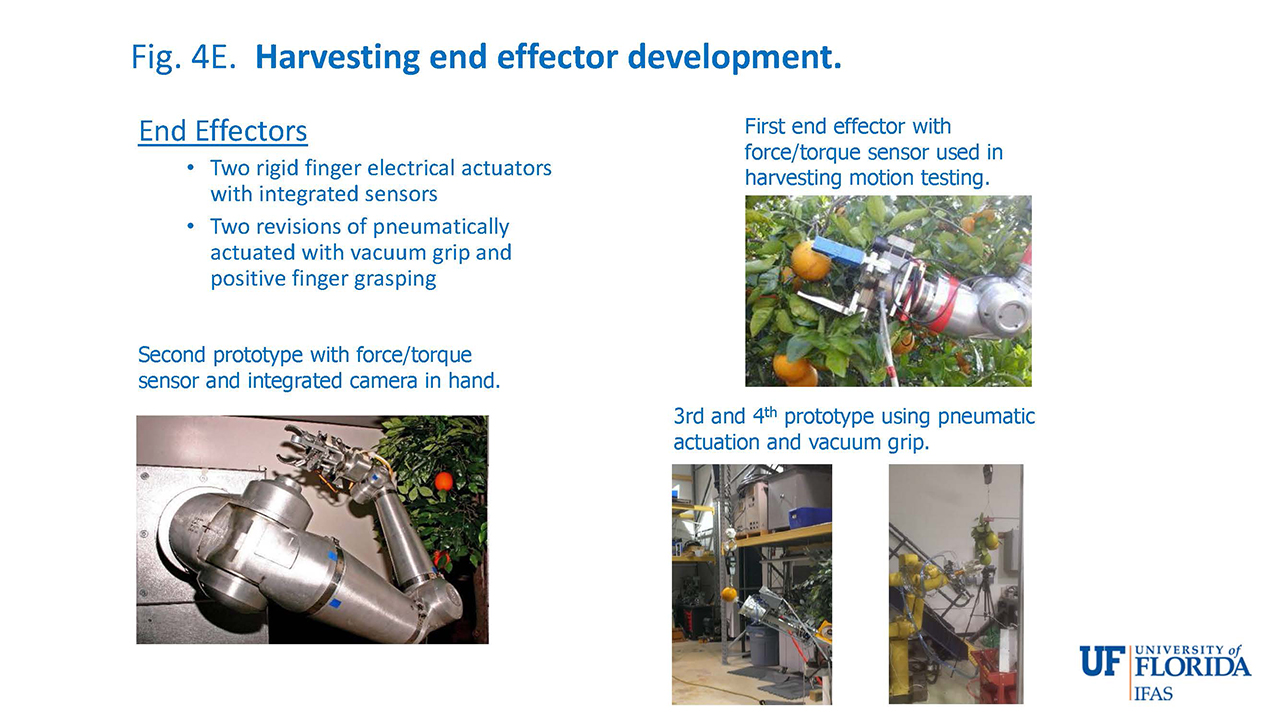
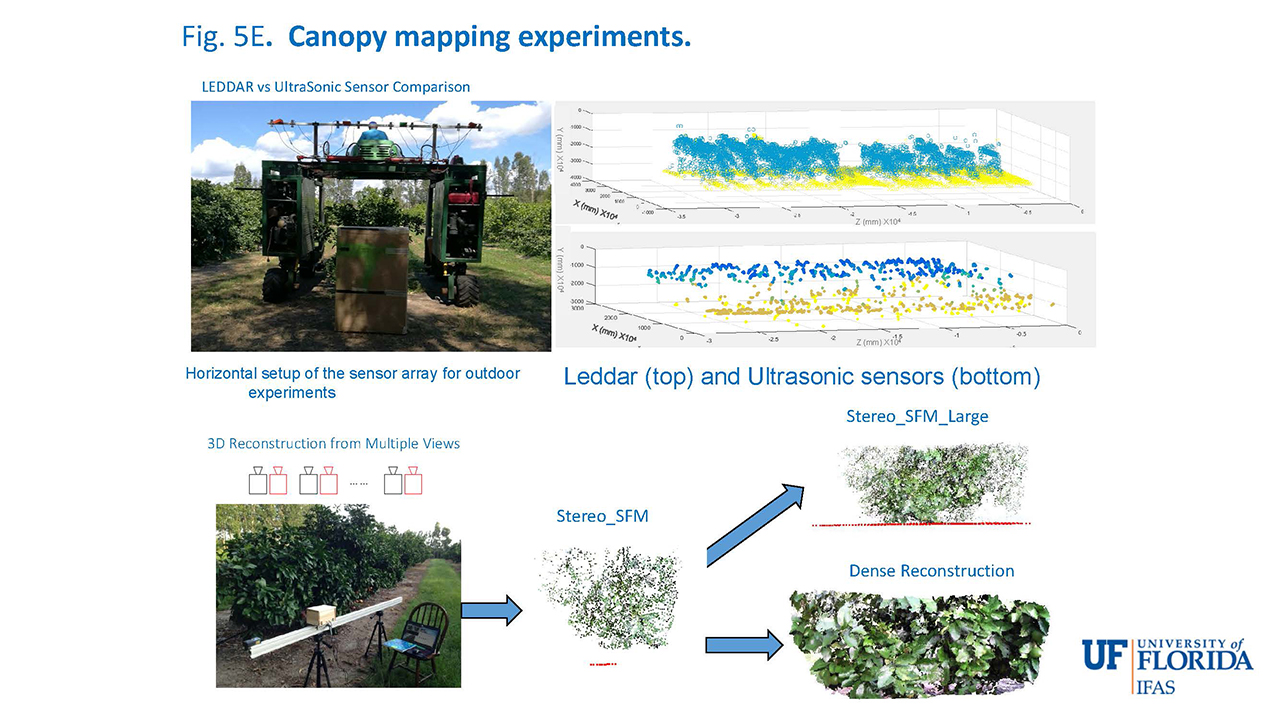
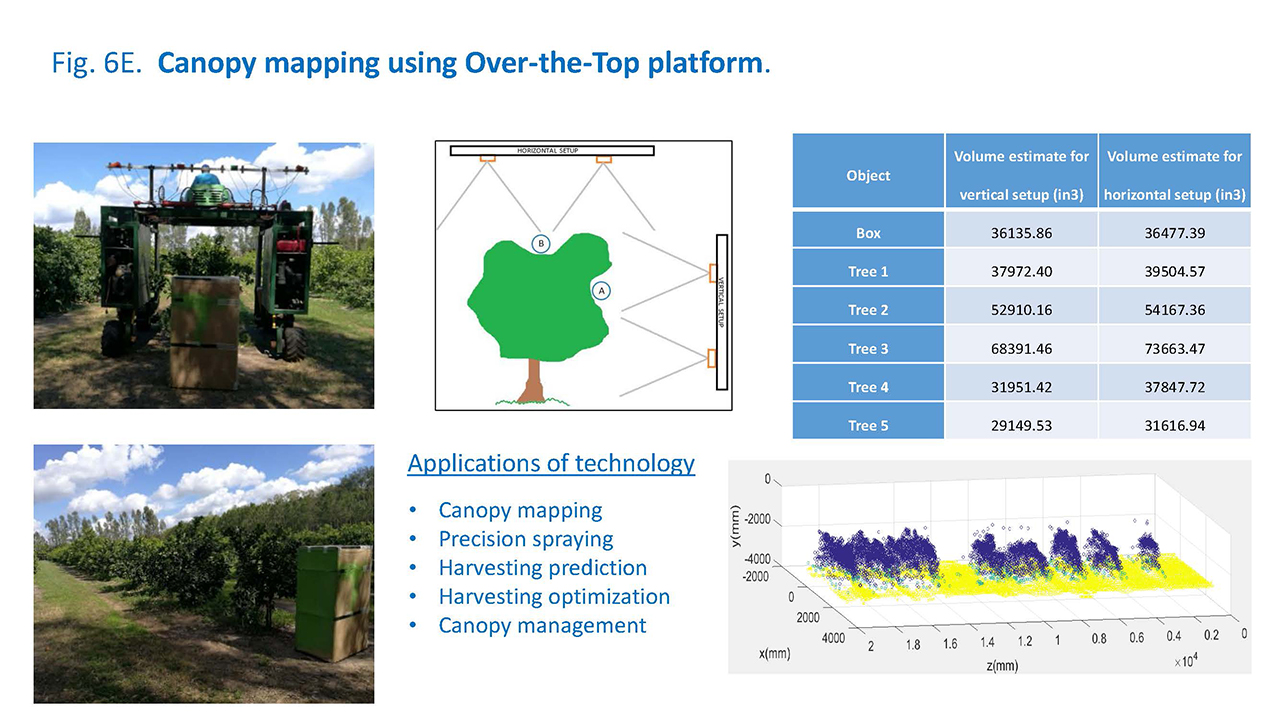
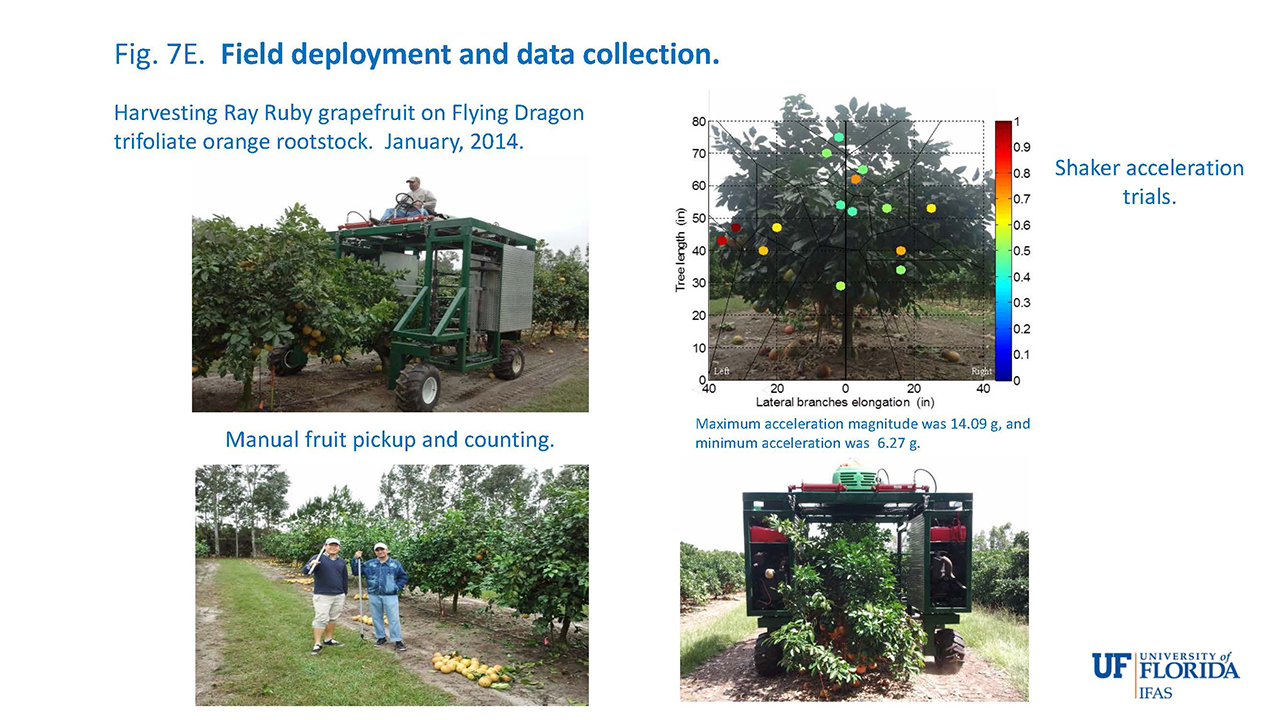
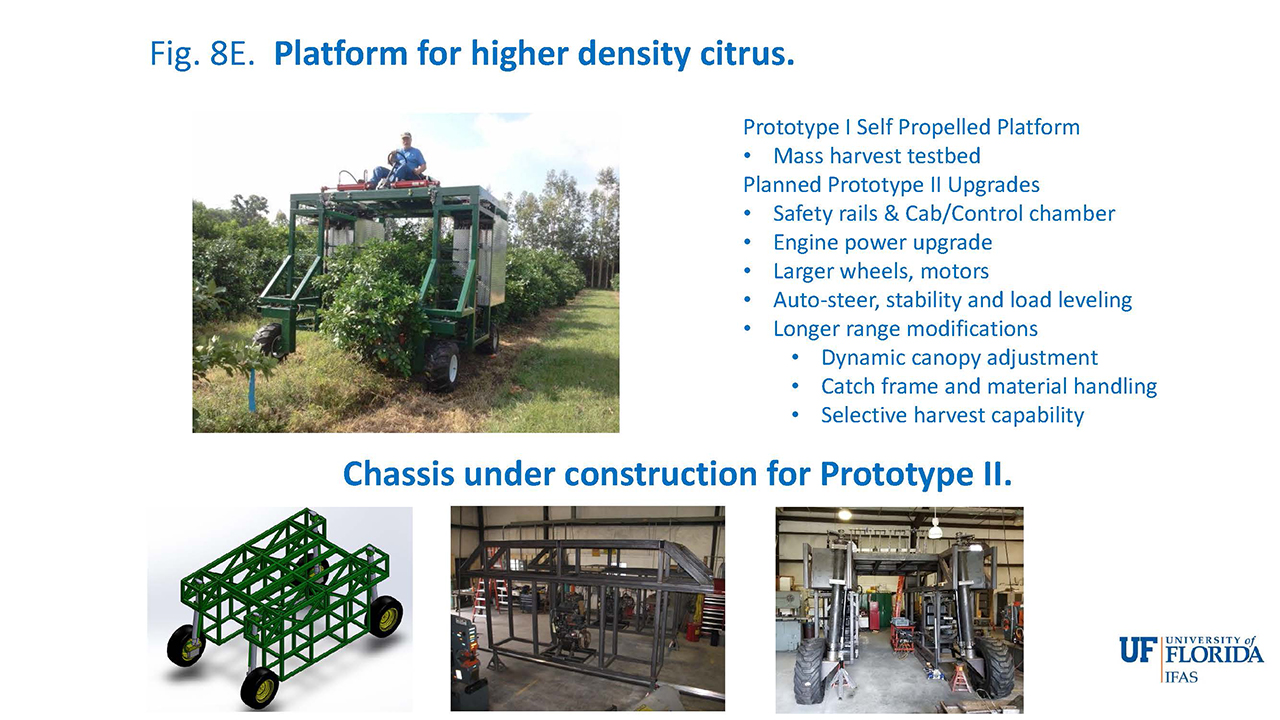
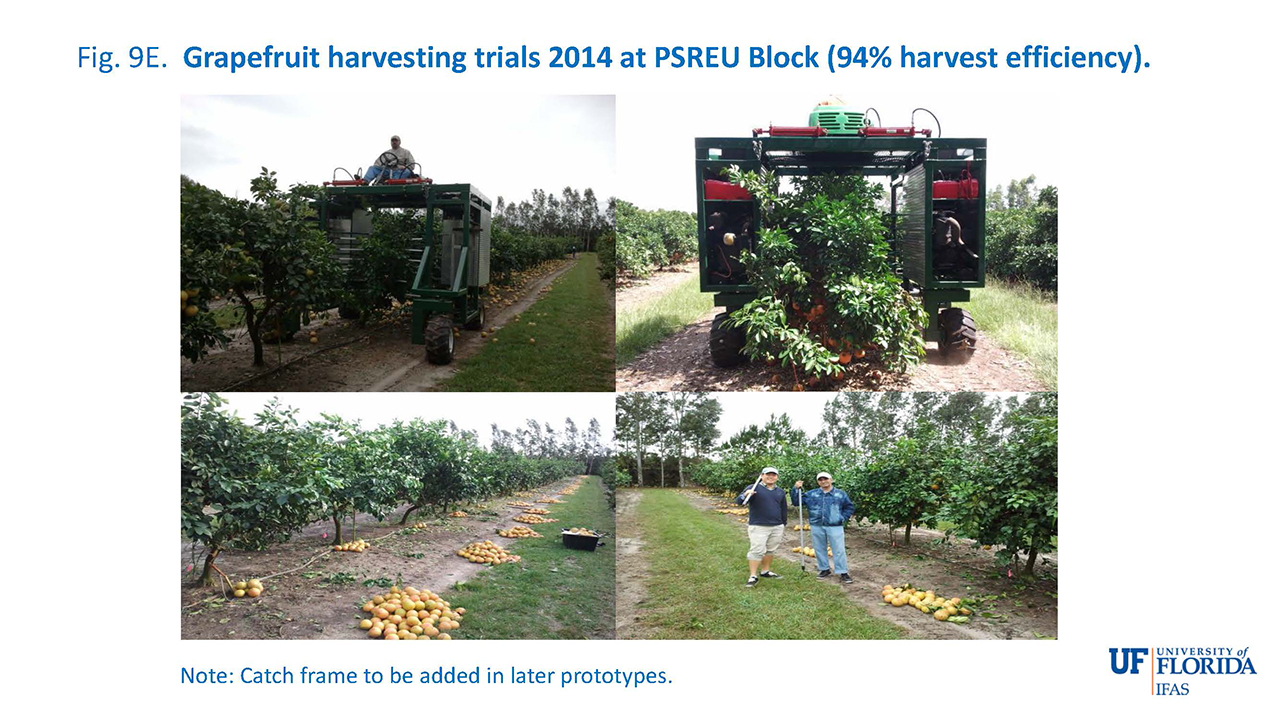

.jpg)
![Fig. 1. UF-PSREU scion/rootstock trial – Yield: mean + std. dev. [boxes/tree, January 2017].](/media/crecifasufledu/citrus-research/images/rootstock-trials/psreu-scion-rootstock-trial/fig1.JPG)
![Fig. 2. UF-PSREU scion/rootstock trial – Yield [boxes/tree, March 2018].](/media/crecifasufledu/citrus-research/images/rootstock-trials/psreu-scion-rootstock-trial/fig2.JPG)
![Fig. 3. UF-PSREU scion/rootstock trial – juice Acid: mean + std. dev. [December 2018].](/media/crecifasufledu/citrus-research/images/rootstock-trials/psreu-scion-rootstock-trial/fig3.JPG)
![Fig. 4. UF-PSREU scion/rootstock trial – juice Brix: mean + std. dev. [December 2018].](/media/crecifasufledu/citrus-research/images/rootstock-trials/psreu-scion-rootstock-trial/fig4.JPG)
![Fig. 5. UF-PSREU scion/rootstock trial – juice Ratio: mean + std. dev. [December 2018].](/media/crecifasufledu/citrus-research/images/rootstock-trials/psreu-scion-rootstock-trial/fig5.JPG)
![Fig. 6. UF-PSREU scion/rootstock trial – PS/box: mean + std. dev. [December 2018].](/media/crecifasufledu/citrus-research/images/rootstock-trials/psreu-scion-rootstock-trial/fig6.JPG)
![Fig. 7. UF-PSREU scion/rootstock trial – juice Color: mean + std. dev. [December 2018].](/media/crecifasufledu/citrus-research/images/rootstock-trials/psreu-scion-rootstock-trial/fig7.JPG)
![Fig. 8. UF-PSREU scion/rootstock trial – Yield: mean + std. dev. [boxes/tree, January, 2020].](/media/crecifasufledu/citrus-research/images/rootstock-trials/psreu-scion-rootstock-trial/fig8.JPG)
![Fig. 9. 2019-20 UF-PSREU scion/rootstock trial – juice Acid: mean + std. dev. [January, 2020].](/media/crecifasufledu/citrus-research/images/rootstock-trials/psreu-scion-rootstock-trial/fig9.JPG)
![Fig. 10. UF-PSREU scion/rootstock trial – Brix: mean + std. dev. [January, 2020].](/media/crecifasufledu/citrus-research/images/rootstock-trials/psreu-scion-rootstock-trial/fig10.JPG)
![Fig. 11. UF-PSREU scion/rootstock trial – juice Ratio: mean + std. dev. [January, 2020].](/media/crecifasufledu/citrus-research/images/rootstock-trials/psreu-scion-rootstock-trial/fig11.JPG)
![Fig. 12. UF-PSREU scion/rootstock trial – PS/box: mean + std. dev. [January, 2020].](/media/crecifasufledu/citrus-research/images/rootstock-trials/psreu-scion-rootstock-trial/fig12.JPG)
![Fig. 13. UF-PSREU scion/rootstock trial – juice Color: mean + std. dev. [January, 2020].](/media/crecifasufledu/citrus-research/images/rootstock-trials/psreu-scion-rootstock-trial/fig13.JPG)
![Fig. 14. UF-PSREU scion/rootstock trial – Cumulative yield: mean [boxes/tree, [A]: 3-year seasons 2016/17; 2017/18 & 2019/20 and [B]: 2-year seasons 2016/17 & 2019/20.](/media/crecifasufledu/citrus-research/images/rootstock-trials/psreu-scion-rootstock-trial/fig14.JPG)
![Fig. 15. UF-PSREU scion/rootstock trial – HLB Ratings: mean + std. dev. [November 2020].](/media/crecifasufledu/citrus-research/images/rootstock-trials/psreu-scion-rootstock-trial/fig15.JPG)
![Fig. 1N. UF-PSREU scion/rootstock trial – Navel scions, Brix: mean [December, 2019].](/media/crecifasufledu/citrus-research/images/rootstock-trials/psreu-scion-rootstock-trial/fig1N.JPG)
![Fig. 2N. UF-PSREU scion/rootstock trial – Navel scions, Acid: mean [December, 2019].](/media/crecifasufledu/citrus-research/images/rootstock-trials/psreu-scion-rootstock-trial/fig2N.JPG)
![Fig. 3N. UF-PSREU scion/rootstock trial – Navel scions, Ratio: mean [December, 2019].](/media/crecifasufledu/citrus-research/images/rootstock-trials/psreu-scion-rootstock-trial/fig3N.JPG)
![Fig. 4N. UF-PSREU scion/rootstock trial – Navel scions, PS/box: mean [December, 2019].](/media/crecifasufledu/citrus-research/images/rootstock-trials/psreu-scion-rootstock-trial/fig4N.JPG)
![Fig. 5N. UF-PSREU scion/rootstock trial – Navel scions, Fruit weight: mean + std. dev. [lbs., December, 2019].](/media/crecifasufledu/citrus-research/images/rootstock-trials/psreu-scion-rootstock-trial/fig5N.JPG)
![Fig. 6N. UF-PSREU scion/rootstock trial – Navel scions, Fruit diameter: mean + std. dev. [inches, December, 2019].](/media/crecifasufledu/citrus-research/images/rootstock-trials/psreu-scion-rootstock-trial/fig6N.JPG)
![Fig. 7N. UF-PSREU scion/rootstock trial – Navel scions, % juice [by weight]: mean + std. dev. [December, 2019].](/media/crecifasufledu/citrus-research/images/rootstock-trials/psreu-scion-rootstock-trial/fig7N.JPG)